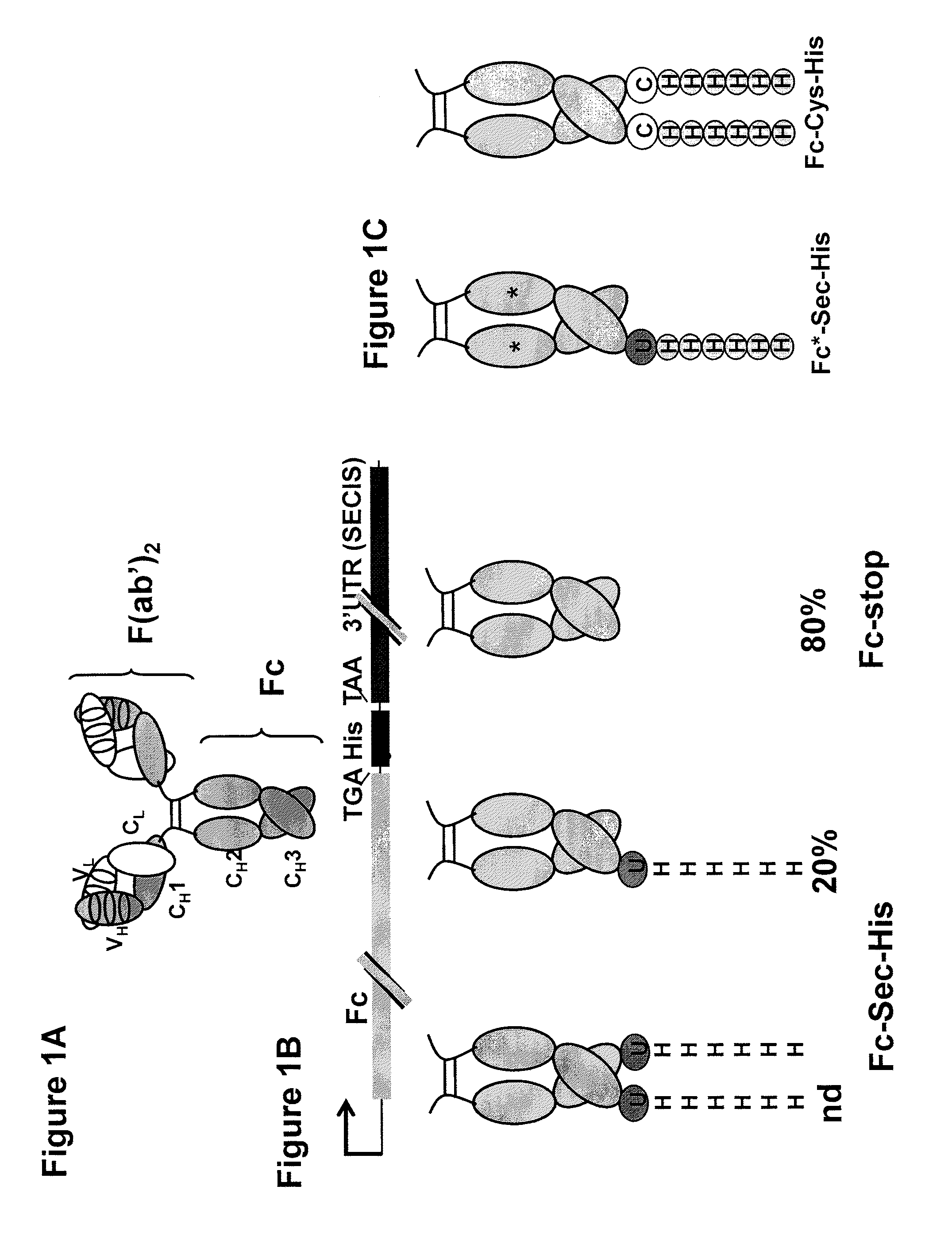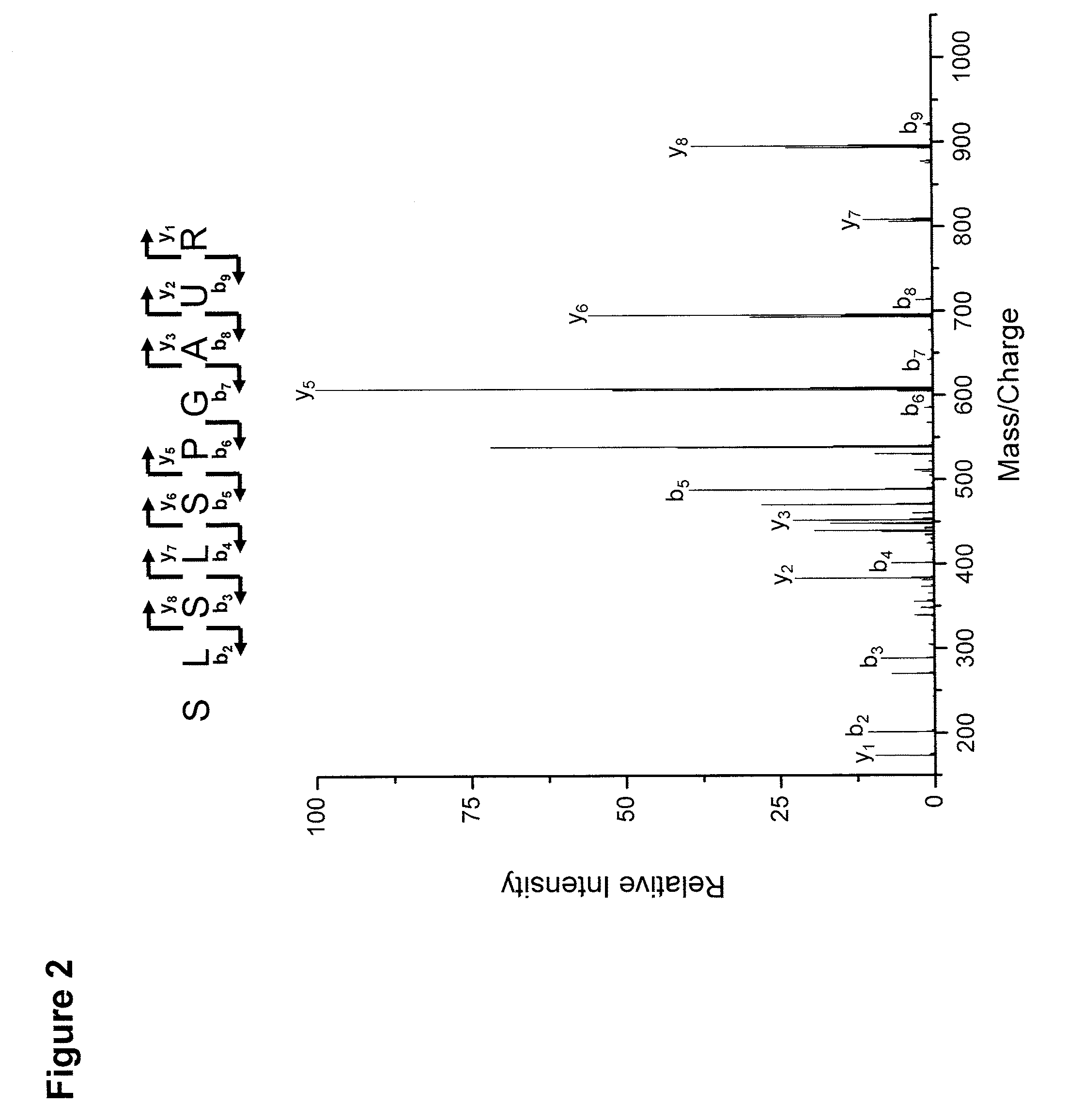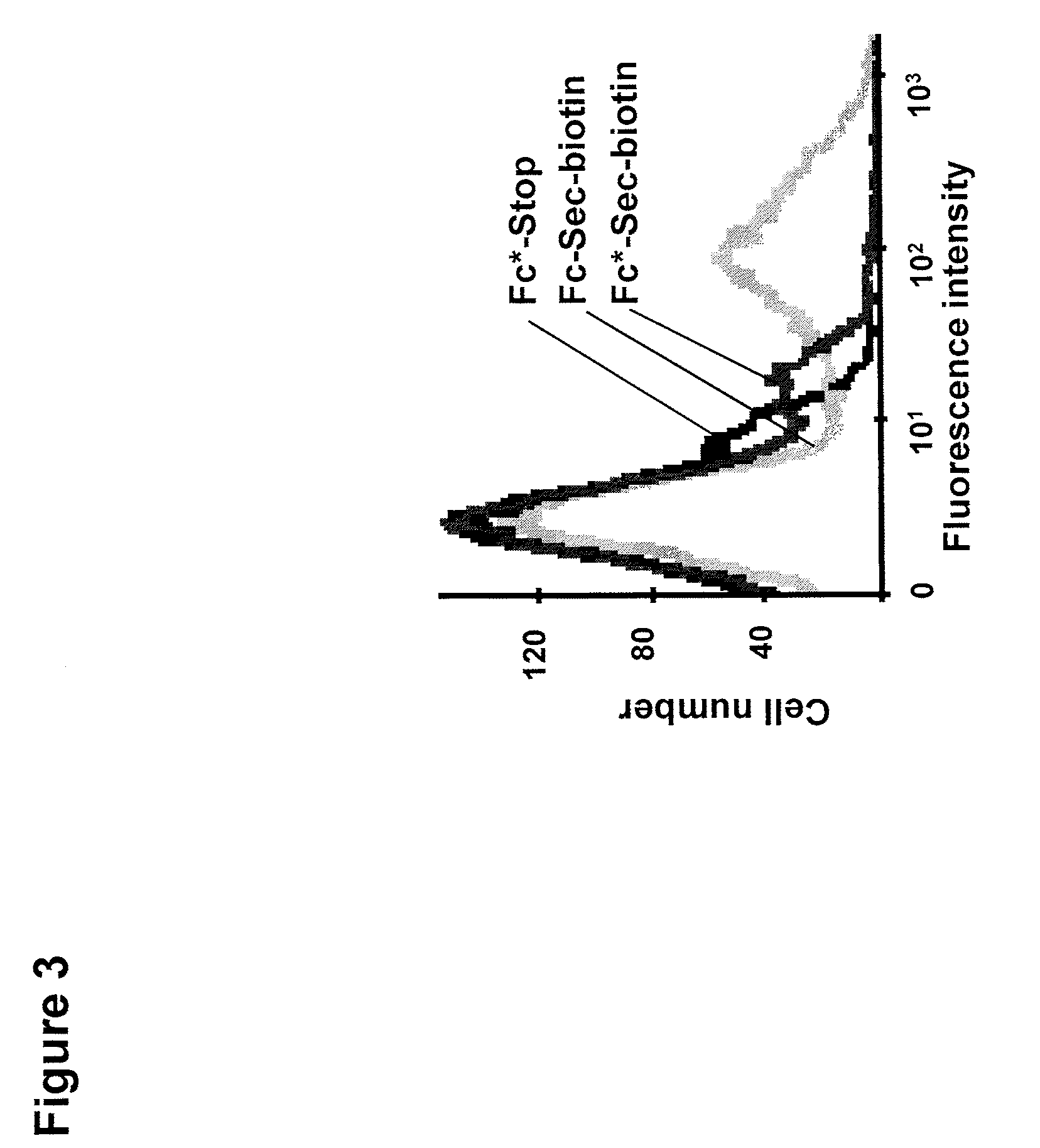Selenocysteine mediated hybrid antibody molecules
a hybrid antibody and selenocysteine technology, applied in the field of selenocysteine mediated hybrid antibody molecules, can solve the problems of reducing wound healing, anemia, damage to mucosal tissues, and damage to healthy cells and tissues
- Summary
- Abstract
- Description
- Claims
- Application Information
AI Technical Summary
Benefits of technology
Problems solved by technology
Method used
Image
Examples
example 1
[0074]This example demonstrates that selenocysteine can be incorporated into an antibody molecule expressed in mammalian cells.
[0075]Preparing a Plasmid.
[0076]The Fc portion of human IgG1 including the hinge region was amplified by PCR using the previously described PIGG vector as a template, described in Rader et al., FASEB J., 16: 2000-2002 (2002), and the following primers: Fc-5′ (gggtaccatggactggacctggaggatcctcttcttggtggcagcagccacaggagctcactccgagcccaaatcttctgacaaaactcacaca) (SEQ ID NO:1) and Fc-3′ (cggagacaagcttaggctcttctgcgtgtagtggttgtgcag) (SEQ ID NO:2). The 5′ primer fuses the human IgG1 signal sequence to Fcγ1, thereby enabling the expressed Fc-protein to be secreted into the medium. Cysteine 5 in the γ1 hinge (EPKSCDKTHTCPPCP) (SEQ ID NO:3) forming a disulfide bridge with a cysteine in constant region of the light chain was mutated to a serine as described in Lo et al., Protein Eng., 6: 495-500 (1998). A silent Hind III site was introduced through the 3′ primer, replacing t...
example 2
[0093]This example demonstrates that a synthetic molecule can be selectively bound to a selenocysteine-containing antibody protein.
[0094]Conjugating the Small Synthetic Molecule to the Selenocysteine-Containing Antibody Protein.
[0095]A biotin reporter molecule (PEO-Iodoacetyl Biotin, molecular weight 542.43 g / mol, Pierce) was covalently attached to the selenocysteine of the Fc-Sec-His proteins described above. Fc-Sec-His and controls including Fc-stop and Fc-Cys-His were diluted in 15 mL 100 mM sodium acetate (pH 5.1) and concentrated to a 4 μM solution using 10-kDa cutoff centrifugal filter devices (Millipore). DTT (0.1 mM final concentration) as well as the biotin reporter molecule (40 μM final concentration) were added to the proteins and incubated for 50 min in the dark. The proteins were diluted in 15 mL 100 mM sodium acetate (pH 5.1) and 100× concentrated using again 10-kDa cutoff centrifugal filter devices (Millipore). The same step was repeated once with 100 mM sodium acetat...
example 3
[0103]This example demonstrates that activity is retained in vitro for an antibody molecule bound to a synthetic small molecule.
[0104]The biotin reporting moiety described above was incubated with Fc-Sec-His along with Fc*-Sec-His and Fc*-stop, two control proteins prepared as the Fc-Sec-His and Fc-stop proteins described above but having a mutation (N297A) that impairs Fc-receptor binding. An SDS-PAGE / Coomassie analysis of Fc-Sec-His, Fc*-Sec-His, and Fc-stop showed that selenocysteine was incorporated into Fc*-Sec-His at a similar level to Fc-Sec-His, wherein Fc*-Sec-His has a lower molecular weight due to the removal of the glycosylation site in the CH2 portion of the Fc protein.
[0105]Binding to peripheral blood mononuclear cells (PBMC), which express the Fc receptor, was analyzed using flow cytometry. Five μg of Fc-Sec-His, Fc*-Sec-His, and Fc*-stop were incubated with PBMC, and then stained with a streptavidin / PE conjugate. As shown in FIG. 3, the non-mutated Fc-Sec-His protein...
PUM
| Property | Measurement | Unit |
|---|---|---|
| pKa | aaaaa | aaaaa |
| pKa | aaaaa | aaaaa |
| molecular weight | aaaaa | aaaaa |
Abstract
Description
Claims
Application Information
 Login to View More
Login to View More - R&D
- Intellectual Property
- Life Sciences
- Materials
- Tech Scout
- Unparalleled Data Quality
- Higher Quality Content
- 60% Fewer Hallucinations
Browse by: Latest US Patents, China's latest patents, Technical Efficacy Thesaurus, Application Domain, Technology Topic, Popular Technical Reports.
© 2025 PatSnap. All rights reserved.Legal|Privacy policy|Modern Slavery Act Transparency Statement|Sitemap|About US| Contact US: help@patsnap.com



